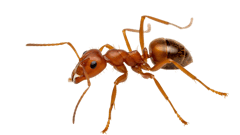
During the Hemp Virtual Conference on June 23, produced by Hemp Grower and Cannabis Conference, and sponsored by Cannasure Insurance Services, hemp producers and processors, lawyers, regulators and industry researchers came together to discuss some of the most pertinent issues the hemp industry faces today.
The session “The Latest in Hemp Research” exclusively highlighted the most recent projects researchers are facilitating to discover more about the hemp crop. It included presentations from:
- Marguerite Bolt, Hemp Extension Specialist, Department of Agronomy – Purdue University;
- Larry Smart, Professor, Horticulture Section – Cornell University; and
- Heather Darby, Professor of Agronomy – The University of Vermont.
Bolt shared the details of the university’s organic hemp research project, in partnership with Rodale Institute, and funded by USDA’s Organic Research and Extension Initiative grant. The research will focus on yield, productivity and economic returns using three field sites, including two Purdue research plots in northern and southern Indiana, as well as one in Pennsylvania (where Rodale Institute is located). The three-year program will focus on pests and pathology, crop rotations and weed density in row crop systems, soil health (including rhizosphere temperatures), as well as economic and environmental sustainability for organic growers.
RELATED: How Industrial Hemp May Fit Into Farmers’ Rotations as a Cash Crop and a Cover Crop
Smart outlined the results of Cornell University’s 2019 CBD variety trials, partnership with the Empire State Development Corporation, New York State Ag & Markets and Pyxus International. The trials were conducted in two research plots in Ithaca and Geneva, and analyzed performance of yields in commercially available cultivators for New York state growers, as well as variation in traits, such as CBD and THC percentages, growth rate, flowering times and more.
RELATED: Cornell University Breaks Ground on Hemp Research
Darby presented two years of data on CBD hemp row spacing, where University of Vermont researchers analyzed the differences in yields, CBD percentages, starts, plant morphology, and disease and weed control in 1 ft. x 1 ft. , 3 ft. x 3 ft., and 5 ft. x 5 ft. spacing arrangements with the cultivar Ceiba—noting that advantages to narrower plant spacing include higher yields, oftentimes, but possibly also increased disease pressure. Darby also shared a bit of equipment research with grain and fiber crops as it relates to weed control and row spacing. She highlighted the university’s experiments with grain drills and air seeders.
To view the researchers’ full presentations, as well as sessions on finding the right partners, evolving hemp regulations and harvesting techniques—access the Hemp Virtual Conference video archive here.























